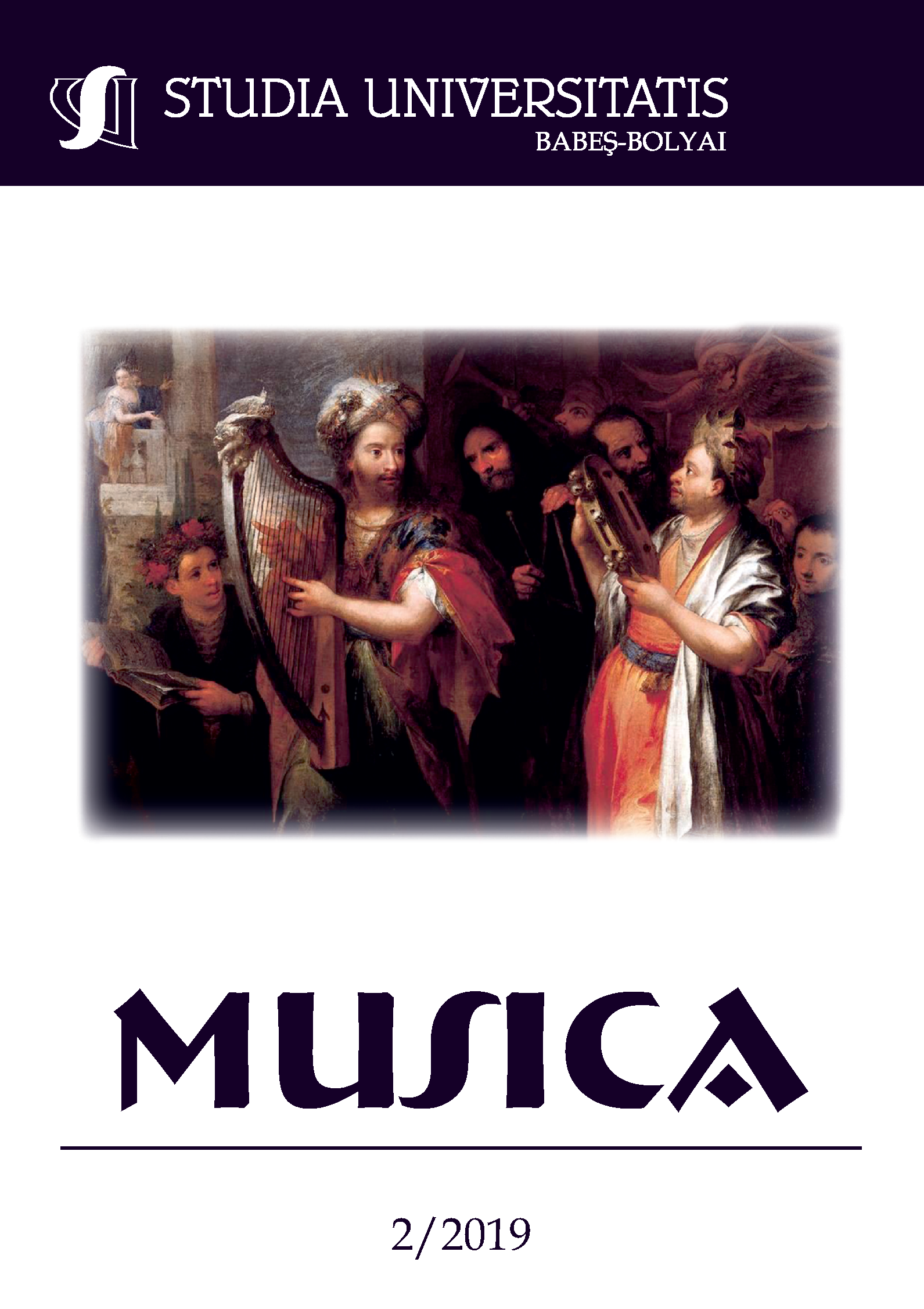FEMALE CHARACTERS IN SERAGLIO GENRE: CHANGING SOCIAL MILIEU AND PUBLIC SPACE FOR WOMEN DURING THE EIGHTEENTH CENTURY
DOI:
https://doi.org/10.24193/subbmusica.2019.2.01Keywords:
seraglio opera, women, sensibility, public space. Freemason, Enlightenment.Abstract
With a harem-abduction narrative, the eighteenth-century seraglio opera ostensibly focuses on a male protagonist, or seemingly celebrates the Oriental male ruler as an enlightened monarch who conveys the Enlightenment messages. It is, nonetheless, the female characters that seraglio opera features prominently as they take initiative in a harem escape. Highly contrasting themselves with the prevalent contemporary sentimental heroine type, they unmistakably exhibit compelling stage presence and dominance over feeble or ineffectual male characters. Pasha Selim in Mozart’s Die Entführung aus dem Serail is, for instance, a mere speaking role stripped of eloquence expressed in singing. In Haydn’s L’incontro improvviso, female characters’ actions propel the seria side of the narrative, thus negating stereotypical notions of Oriental women: languorous, sensual or submissive beings. This paper argues that such a portrayal of women in seraglio genre reflects the changing social landscape during the Enlightenment: the burgeoning voice for and evolving views of women; the composers’ embracement of Enlightenment zeitgeist; and the societal recognition of women’s merit and power cultivated at public spaces such as salons or Freemasonic lodges during a century of sweeping socio-political currents.
References
Scores:
Haydn, Joseph, La Vera Costanza, Munich: G. Henle, 1962.
---. L’incontro improvviso, Munich: G. Henle, 1962.
Mozart, W. A., Die Entführung aus dem Serail, New York, Dover, 1989.
Piccinni, Niccolò, La buona figliuola, New York, Taylor and Francis, 1983.
Books and Articles:
Allen, James Smith, “Sisters of Another Sort: Freemason Women in Modern France, 1725–1940”, The Journal of Modern History, 2003, 75, no. 4: 783-835.
Astell, Mary, A serious proposal to the Ladies, London, Richard Wilkin, 1697. https://ia800207.us.archive.org/5/items/seriousproposalt00aste/seriousproposalt00aste.pdf.
Bauman, Thomas, Die Entführung aus dem Serail, Princeton, Princeton University Press, 1988.
Brophy, Brigid, Mozart the Dramatist, New York, Da Capo, 1998.
Burke, Janet M. and Margaret C. Jacob, “French Freemasonry, Women, and Feminist Scholarship”, The Journal of Modern History, 1996, 68, no. 3: 513-549.
Castel, Nico, The Libretti of Mozart’s Completed Operas, Vol. 1., New York, Leyerle Publications, 1997.
Clark, Caryl, “Reading and Listening: Viennese Frauenzimmer, Journals and the Sociocultural Context of Mozartean Opera Buffa”, Musical Quarterly, 2004, 87, no. 1: 140-175.
Defoe, Daniel, An Essay Upon Projects, London, Cassell & Company, 1887 (Original work published 1697). http://www.gutenberg.org/files/4087/4087-h/4087-h.htm
Goodman, Dena, The Republic of Letters: A Cultural History of the French Enlightenment. Ithaca, N.Y, Cornell University Press, 1994.
Harvey, David Allen, The French Enlightenment and Its Others. New York, Palgrave, 2012.
Horn, Melton James Van, “School, Stage, Salon: Musical Cultures in Haydn’s Vienna”, The Journal of Modern History, 2004, 76, no. 2: 251-279.
Hume, David, A Treatise of Human Nature. Book III, Part iii, section i, 202. Ann Arbor: University of Michigan Library 1738. https://quod.lib.umich.edu/e/ecco/004806339.0001.003/1:7.1?rgn=div2;view=fulltext
Landon, H.C. Robbins, Ed., The Collected Correspondence and London Notebooks of Joseph Haydn, London, Barrie and Rockliff, 1959.
Lowe, Melanie, Olivia Bloechl, Jeffrey Kallberg, Eds., “Difference and Enlightenment in Haydn’s instrumental music”, in Rethinking Difference in Music Scholarship. Cambridge, Cambridge University Press, 2015.
Nohl, Ludwig, Ed., The Letters of Wolfgang Amadeus Mozart (1769-1791) (Lady Wallace, Trans.), 2 vols. Philadelphia, Frederick Leypoldt, 1866. https://archive.org/stream/lettersofwolfgan02moza/lettersofwolfgan02moza_djvu.txt
O’Brien, Karen, Women and Enlightenment in Eighteenth-Century Britain, Cambridge, Cambridge University Press, 2009.
Said, Edward, Orientalism, New York, Vantage Books, 1979.
Schroeder, David, “Haydn and Gellert: Parallels in Eighteenth-Century Music and Literature”, Current Musicology, 1983, no. 35: 7-18.
Solomon, Maynard, Mozart: A Life. New York, Harper, 1995.
Stone, Lawrence, The Family, Sex, and Marriage in England, 1500-1800, New York, Harper Torchbooks, 1983.
Wollstonecraft. Mary, A Vindication of the Rights of Woman. Eileen Hunt Botting, Ed., New Haven, Yale University Press, 2014 (Original work published 1792).
Downloads
Published
How to Cite
Issue
Section
License
Copyright (c) 2019 Studia Universitatis Babeș-Bolyai Musica

This work is licensed under a Creative Commons Attribution-NonCommercial-NoDerivatives 4.0 International License.






